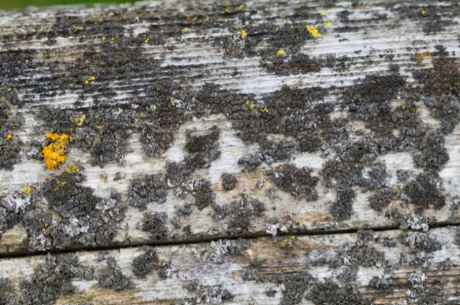Welcome to our comprehensive guide on banishing mildew from your bathroom walls. Mildew, a common and persistent problem in bathrooms, thrives in the damp, humid environment, leaving unsightly stains and potentially causing health issues. But don’t worry—removing mildew is a manageable task with the right approach.
In this blog post, we’ll walk you through effective methods and preventive measures to ensure your bathroom remains fresh, clean, and mildew-free. Whether you’re dealing with a small patch or a widespread issue, our step-by-step instructions will help you reclaim your bathroom walls and keep them pristine. Let’s dive in!
What is Mildew?
Mildew is a type of fungus that typically appears as a thin, powdery or fluffy growth on surfaces, especially in damp and humid environments. It is often white, gray, or light green in color and tends to grow on organic materials such as wood, paper, fabric, and leather. In bathrooms, mildew commonly appears on walls, ceilings, tiles, and grout lines. Most people don’t know the difference between mold and mildew and our previous post explains it thoroughly.
Mildew thrives in moist, warm conditions with poor ventilation. It can develop rapidly if these conditions are met, often within 24-48 hours. Although it is less harmful than its fungal cousin mold, prolonged exposure to mildew can still cause health issues, including respiratory problems, allergies, and skin irritation.
In addition to health concerns, mildew can cause cosmetic damage to surfaces, leaving behind stubborn stains and an unpleasant musty odor. Therefore, it’s important to address mildew promptly and take preventive measures to keep it at bay.
For Mold Removal Service in New Jersey, Call (877) 750-7876
what causes mildew growth in the bathroom?
Mildew growth in the bathroom is primarily caused by a combination of moisture, warmth, and poor ventilation. Here are the key factors that contribute to mildew proliferation:
- Excess Moisture:
Steam and Water: The frequent use of hot water in showers and baths generates steam and moisture, which can linger on walls, ceilings, and other surfaces.
Leaks: Dripping faucets, leaking pipes, or poorly sealed bathtubs and sinks can introduce additional moisture. - Humidity:
High Humidity Levels: Bathrooms often have high humidity levels due to regular use, especially in homes without adequate ventilation systems. - Poor Ventilation:
Inadequate Airflow: Bathrooms that lack proper ventilation or exhaust fans struggle to disperse humidity effectively.
Closed Spaces: Keeping the bathroom door closed immediately after using hot water traps steam and increases humidity. - Warm Temperatures:
Heat: Bathrooms tend to be warm environments, especially during showers and baths, which create a perfect breeding ground for mildew. - Organic Materials:
Nutrient Sources: Mildew feeds on organic materials commonly found in bathrooms, such as soap scum, shampoos, and cellulose in wallpaper or paint. - Darkness:
Low Light Levels: Mildew prefers darker areas where sunlight doesn’t reach, which is often the case in many parts of the bathroom.
Preventing Mildew Growth
To prevent mildew growth in your bathroom, it’s crucial to address these contributing factors.
Ventilation: Always use the exhaust fan or open windows during and after showers.
Clean Regularly: Wipe down walls, tiles, and other surfaces regularly to prevent moisture buildup.
Fix Leaks: Repair any leaks in faucets, pipes, or fixtures promptly.
Dehumidifier: Consider using a dehumidifier in the bathroom to reduce humidity levels.
How to Remove Mold or Mildew from Bathroom Walls
Dealing with mold or mildew on your bathroom walls can be frustrating, but with the right approach, you can eliminate it and prevent it from coming back. Follow these steps to effectively remove mold and mildew from your bathroom walls:
Materials You’ll Need:
- Protective gloves
- Mask or respirator
- Goggles
- Plastic sheeting (optional)
- Scrub brush or sponge
- Spray bottle
- Bucket
- Towels or rags
- Cleaning solutions (choose one):
- White vinegar
- Hydrogen peroxide
- Bleach solution (1 part bleach to 10 parts water)
Steps to Remove Mold or Mildew from Bathroom Walls
- Ventilate: Open windows and run the exhaust fan.
- Protect: Wear gloves, mask, and goggles.
- Cover: Use plastic sheeting to protect nearby items (optional).
- Choose Cleaner: Use white vinegar, hydrogen peroxide, or a bleach solution.
- Spray: Apply the cleaning solution to the affected areas.
- Sit: Let the solution sit for 10-15 minutes.
- Scrub: Scrub the mold or mildew with a brush or sponge.
- Rinse: Rinse the area with clean water.
- Repeat: Repeat spraying and scrubbing if necessary.
- Dry: Thoroughly dry the cleaned surfaces.
Call Us for Expert Mold Removal in New Jersey – (877) 750-7876
PuroClean Emergency Recovery Services New Jersey is here to help with mold removal. With years of experience and a team of skilled professionals, we have the expertise you need to eliminate and prevent mold in your home and give you a fresh start. From identifying the cause to implementing effective remediation strategies, our team has the knowledge and tools to make your home mold-free. Don’t put off your mold concerns any longer. Get in touch with us today at (877) 750-7876 for mold remediation service in New Jersey.
Conclusion
Removing mold and mildew from your bathroom walls may seem like a daunting task, but with the right approach, it’s entirely manageable. By following the steps outlined in this guide, you can effectively eliminate mold and mildew, ensuring a cleaner, healthier bathroom environment. Remember to prioritize safety by wearing protective gear and choosing the appropriate cleaning solution for your needs. Once your bathroom is mildew-free, adopting preventive measures such as proper ventilation, regular cleaning, and timely repairs will help keep it that way. With consistent care and attention, you can enjoy a fresh and inviting bathroom for years to come.




 PuroClean Emergency Recovery Services
PuroClean Emergency Recovery Services